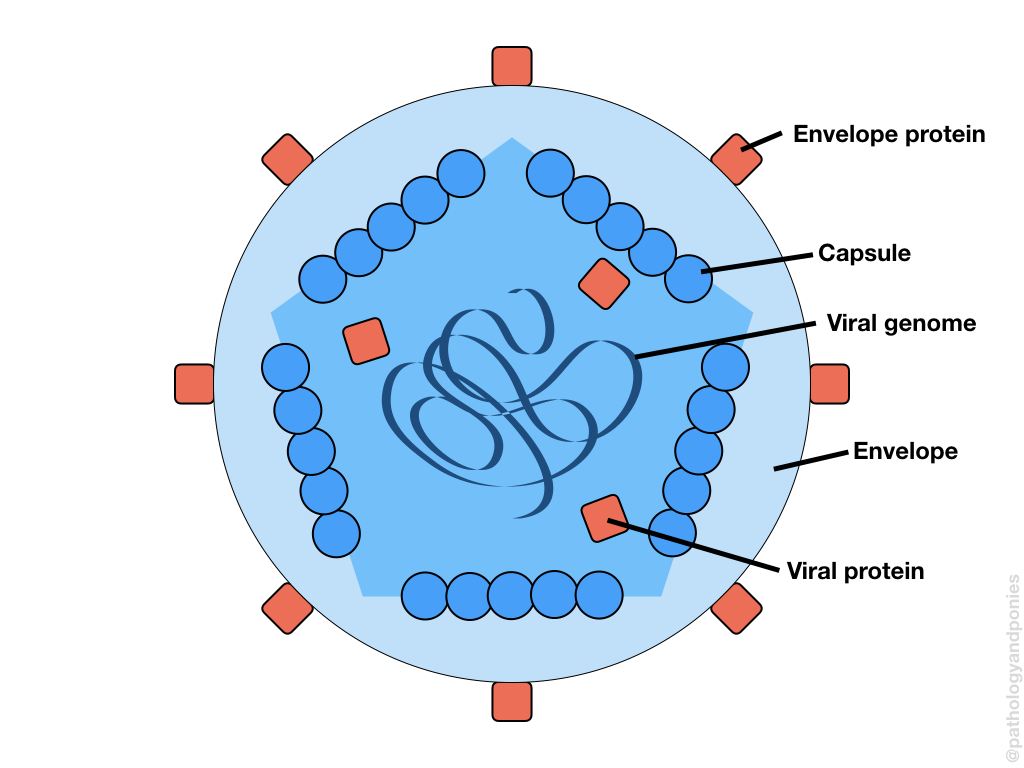
We’ve hit 1500 followers on Facebook! 🎉 This week’s posts will be all about how different kinds of pathogens (disease-causing agents) actually cause disease. Today’s post is on viral infections!
What are viruses?
Viruses are actually pretty crazy, since many scientists do not consider them to be a living organism. This, however, depends on your definition of “alive”. A virus on its own is unable to replicate and produce its own energy, so it will quickly die off. In order to actually reproduce, the virus must infect a host cell, and take over the cell’s production lines to produce more virus. Based on this, many scientists suggest that they cannot be considered living, since anything living must be able to produce its own energy and reproduce on its own. However, viruses still undergo evolution and natural selection processes like other living organisms.
Each viral particle is called a virion, and is essentially a bunch of instructions wrapped in proteins. These instructions can either be RNA, the main instructional code for producing protein within a cell, or DNA, which is normally converted into RNA for protein production. In either case, these instructions will take over the cell’s normal programming, so the cell begins to produce viral proteins instead of what the cell would normally produce.
How do viruses enter cells?
Similar to other pathogens, a virus must first attach itself to a cell before it can enter. Some viruses can make use of their protein coat, called an envelope, to attach. An example of this is hemagglutinin in influenza viruses, which are basically spikes on the protein surface that stab into the host cell to make an anchor. In viruses without an envelope, surface proteins on the virus can bind to receptors normally expressed on the cell, again acting as an anchor.
After attaching to the cell, the virus is brought into the cell either by the normal cell mechanisms for bringing in nutrients, or simply by fusing with the cell membrane and entering the cell. The virus will then shed its protein coat to allow the instructions to be read by the cell machinery.
What happens to virus-infected cells?
The cell will begin to produce the viral proteins, which will be assembled into new viruses. After assembly, the ultimate result of viral infection depends on the type of virus. Non-enveloped viruses without a protein coat often cause lysis (rupture) of the cell, releasing all the newly-formed viruses into the surrounding tissue. Enveloped viruses often form a bud off of their host cell, wrapping themselves in the cell membrane as they do so. This is super beneficial to the virus, as being wrapped in host membranes means the immune system is less likely to recognize them as an invader. Some viruses will end up destroying the cell in this budding process, while others may leave the cell intact to produce more viruses.
If the immune system recognizes a virus-infected cell, it activates systems that induce apoptosis in that cell. Apoptosis is otherwise known as “programmed cell death”, meaning it is a way for the immune system to remove problematic cells without causing a massive inflammatory response. Because the cells are dying off, apoptosis can lead to reduced organ function or other clinical consequences.
How do viruses evade the immune system?
As mentioned, some viruses can use the host’s own cell membranes as a protective coat, however there are many other ways that viruses can avoid the immune system as well. Some of these methods are pretty crazy and devious, which makes viruses pretty scary in my opinion! These are two of my “favourites”:
- Some immune cells called natural killer cells (NK cells) recognize the presence of a specific receptor called MHC on all host cells. When those cells are stressed, they may not display MHC, triggering an NK cell to kill the stressed cells. Some viruses will produce proteins that mimic this receptor, preventing NK cells from recognizing that cell as stressed.
- Other killer cells called cytotoxic T lymphocytes (CTLs) recognize proteins bound to MHC. As part of normal cell protein production, the cell will put that protein on its MHC, to show CTLs in the area what it is making. If the CTL recognizes an abnormal protein, like a viral protein, it will kill that cell. Viruses can get around this by blocking the pathway of protein presentation on MHC, meaning that the CTLs will continuously see the last protein that cell made before the virus infected it.

How do viruses cause disease?
As mentioned, viruses can cause cell death, leading to abnormal organ function. They can also cause a very strong immune response, if the immune system is successfully able to identify the virus and activate its killing processes. This immune response can actually kill normal, healthy cells in the area as well, leading to further cell death.
Viruses that stimulate an antibody response can actually be even more problematic. Usually, antibodies are very specific to whatever the immune system is responding to. With some viruses however, their proteins are extremely similar to some of the proteins normally found in the body. Thus, antibodies against the viral proteins are prone to reacting to the normal proteins as well. This is called molecular mimicry. Unfortunately for the animal, molecular mimicry leads to destruction of normal, healthy cells and significant tissue damage.
Fun photos!
Viruses are actually so small that we can’t see them using traditional microscopy. To see their structure, we have to use electron microscopy, which allows us to see incredibly small things. So small in fact, that we are unable to appreciate their colour! Here are some images of interesting viruses showing off their different shapes.
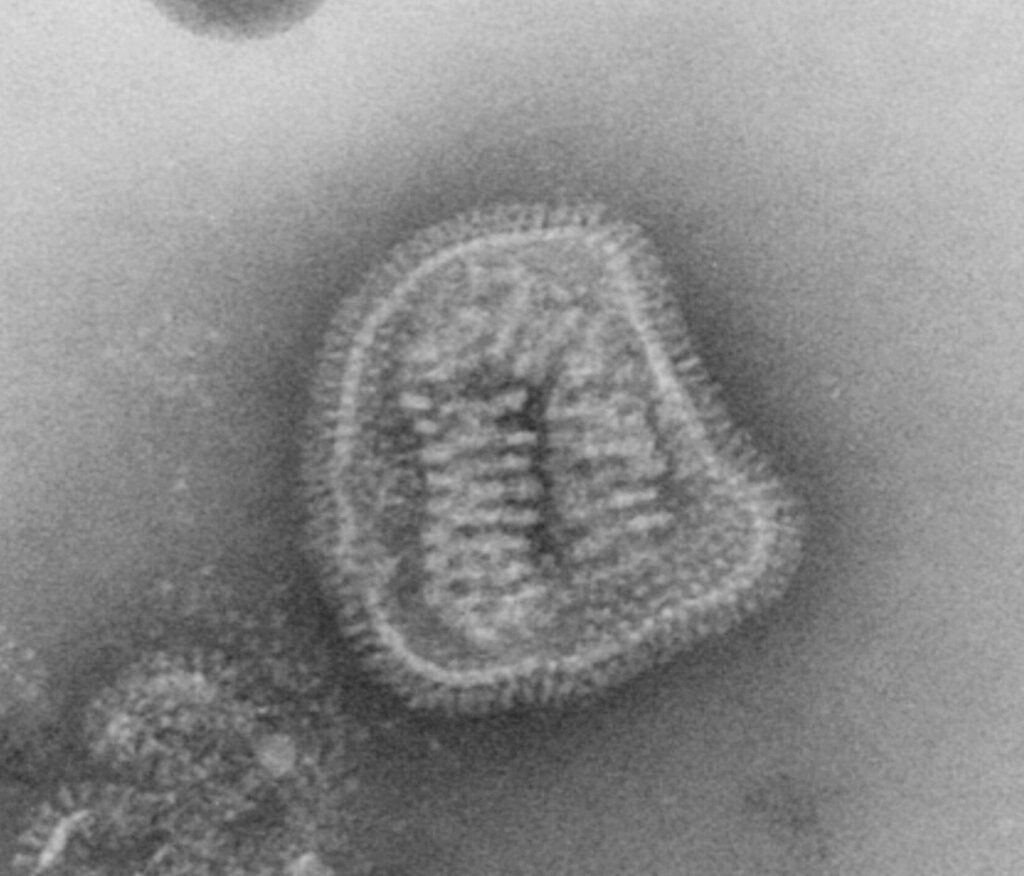
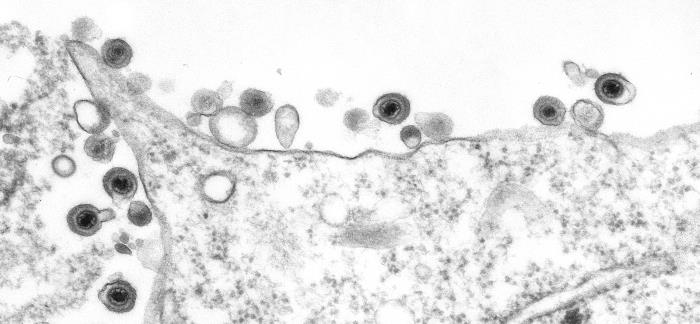
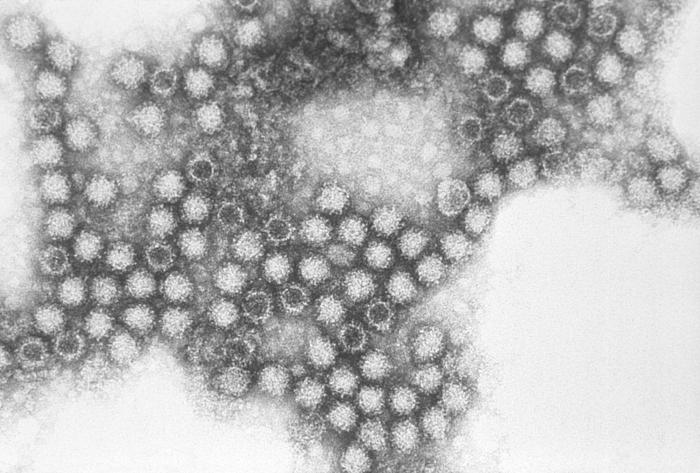
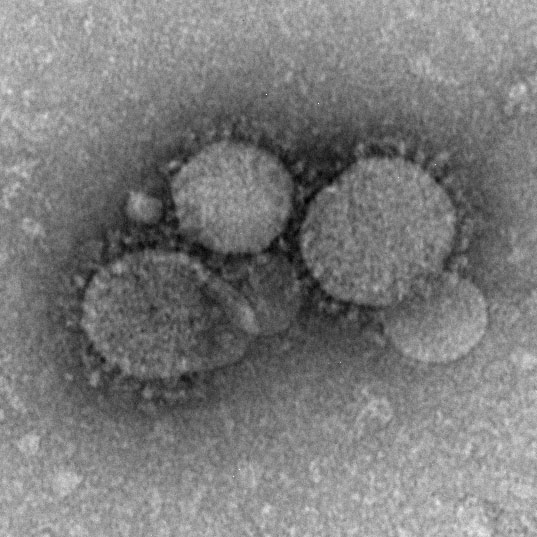


Sources
Engleberg NC, DiRita V, Dermody TS. Schaechter’s Mechanisms of Microbial Disease, Fifth Edition. Lippincott Williams & Wilkins 2012.
Zachary JF. Pathologic Basis of Veterinary Disease, Sixth Edition.
Photos © Centers for Disease Control and Prevention.




